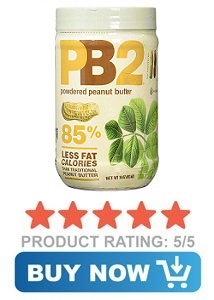PB2 Peanut Butter Review | Sporty's Health
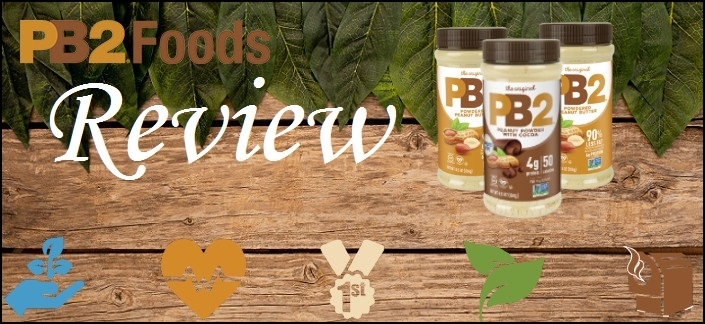
Australians have become smitten with Peanut Butter Powders, which deliver the nutty flavour of peanut butter without the bloated calorie content.
Powdered peanut butter is easy to work with in the kitchen too. It’s not sticky like ordinary peanut butter, making it easier to mix, blend and shake. Creating peanut butter flavoured protein shakes, smoothies and baked goods couldn't be simpler.
Since Bell Plantation released their reduced-fat powdered peanut butter, PB2, it has only grown in popularity in Australia. PB2 is fully plant-based and GMO-free, and has been hailed a flavour-dispensing hero by bodybuilders, competitive athletes and anyone watching their waistline.
Love Peanut Butter, Hate Calories?
When you’re looking to shed a few kilograms, or simply maintain your current body composition (which isn’t always simple!), one of the first foods to get pushed to the back of the cupboard and crossed-off the shopping list is peanut butter.
And this is primarily due to 2 reasons: it tastes amazing and it’s calorie loaded.
Have you ever found yourself standing in the middle of the kitchen with an open jar and a desert spoon, gulping down the nutty goodness without any regard for its energy content?
Though it’s not hard to get wrapped up in a tub of freshly crushed roasted peanuts, it’s not without consequence.
Though 100% pure peanut butter and PB2 powdered peanut butter contain comparable amounts of protein, carbohydrates, sugars and fibre, the fat content is what really makes the difference. Peanut butter actually contains more than 3 times the amount of calories than PB2.
This is because PB2 has been largely de-fatted, which strips about 2/3 of the calories from the product. Though you will never get the same awesome mouth-feel and texture of real peanut butter, PB2 is about as close as you will get to the real thing if you are hanging for some nutty flavour and can’t spare the calories.
Here’s a closer look at the nutritional differences between the two products.
|
|
Prepared Original PB2 Powder (26.8g) 2 tbsp. PB2 (12g) + 1 tbsp. Water |
Peanut Butter (26.8g) |
|
Energy, Cal |
50 |
158 |
|
Kj |
209 |
661 |
|
Protein |
5.0g |
6.5 |
|
Carbohydrates, total |
3.0g |
3.7 |
|
- Sugar |
2.0g |
2.3 |
|
Fats, total |
1.5g |
13.4 |
|
- Saturated |
0g |
2.0 |
|
Fibre |
2.0g |
2.1 |
|
Sodium |
70mg |
5.0mg |
Is Powdered Peanut Butter Good for You?
When it comes to pure peanut butter made from 100% peanuts, the greatest health concerns have always been the fat content and the potential for aflatoxins ending up in the finished product.
Peanut Fats: Nemesis, Nuisance or Non-Sense?
We’re finding out these days that when it comes to quality fats there isn’t as much to worry about as we used to think. Beginning in the 1980s, low-fat diets were put on a tall gold-trimmed pedestal by governments, the food industry and health media, promoted as the best approach to preventing heart disease, obesity and type 2 diabetes (1).
It was supposed to be the beginning of the war on the obesity epidemic. But as the fat content of our diets decreased, we kept on expanding through the middle. Not only was the dietary maneuver ineffective, it almost seemed as if low-fat diets were having the opposite of their intended effect.
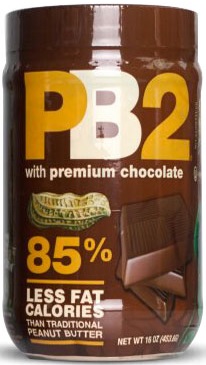 Over the past decade of two, many have been quick to jump on the low-carb bandwagon. After all, apart from alcohol, carbohydrates are the only other macronutrient that we can cut back on to achieve a lower calorie intake.
Over the past decade of two, many have been quick to jump on the low-carb bandwagon. After all, apart from alcohol, carbohydrates are the only other macronutrient that we can cut back on to achieve a lower calorie intake.
You might be wondering about protein at this point. And though it’s wise to reduce processed and cured/smoked meat intake, as well as red meat, we certainly shouldn’t drop our protein intake, unless it’s abnormally high.
Protein is an important nutrient that has a thermogenic effect and promotes muscle maintenance and supports muscle gain. This all helps to keep our body-fat level under control.
When it comes to proving the benefits of low-card diets, it’s still early days. Evidence from large-scale epidemiological studies is inconclusive, though some scientists study these diets by different methods and are convinced that low carbohydrate diets offer greater health benefits than low-fat ones (2,3).
This doesn’t mean we should eat fats indiscriminately. It’s generally not a good idea to obtain much of our fat intake from red meat. And certainly not from processed/cured meats or trans fats. It’s best to stick to primarily plant-based and ocean-derived fats, like linolenic acid and EPA/DHA.
Fortunately, most powdered peanut butters are 100% plant-based, low-fat and reasonably low-carb and contain no trans fats. Therefore, it seems unlikely that the small amount of oil contained in defatted peanut butter powders would have a considerably negative impact upon our health.
Aflatoxins: the Peanut's Bane
Any reference to toxin in relation to food always sets off alarm bells for the health conscious. And yes, peanuts and peanut-derived products do contain a small amount of aflatoxin.
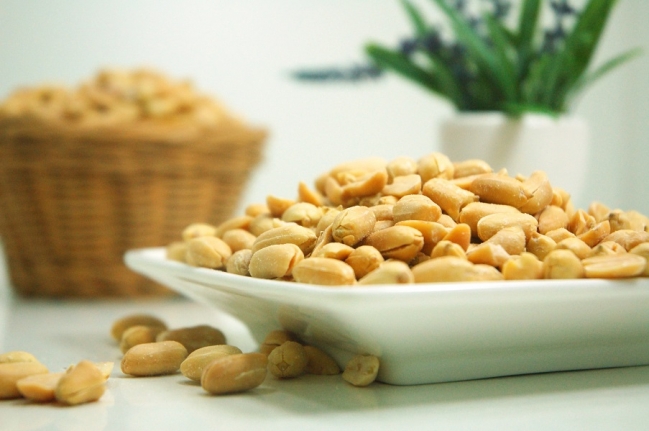
Aflatoxins are harmful chemicals (mycotoxins) produced by the moulds Aspergillus flavus and Aspergillus parasiticus. Aflatoxins B1, B2, G1 and G2 have been identified as posing the greatest risk to human health, particularly affecting the liver. Contamination can occur in a wide range of foods, such as corn, peanuts, tree nuts, coffee, rice and various spices.
Many methods are used in Australia to control the amount of aflatoxin in peanuts, such as farm management practices, aflatoxin assays and segregation based on aflatoxin content.
The 20th Australian Total Diet Survey, published by Food Standards Australia New Zealand in 2003, indicated that these 4 toxic aflatoxins were not detected in any Australian (high-risk) foods, with a reporting limit of 0.001mg/kg. They tested a range of foods, including breads, biscuits, rice, oats, instant coffee and peanut butter.
However, the 19th Australian Total Diet Survey did detect aflatoxin in 1 of 9 samples of roasted salted peanuts, containing a level of 0.038mg/kg of Aflatoxin B1 and 0.006mg.kg of B2. This exceeded the FSANZ recommendations at that time of 0.015mg/kg
PB2 is a North American product made from locally sourced peanuts. Their regulatory body is the Food and Drug Administration, which is like the Australian TGA and FSANZ rolled into one.
In 1969 the American FDA set an aflatoxin limit of 20ppb in all foods. This is slightly higher than the Australian recommendations of 0.015mg/kg (15ppb).
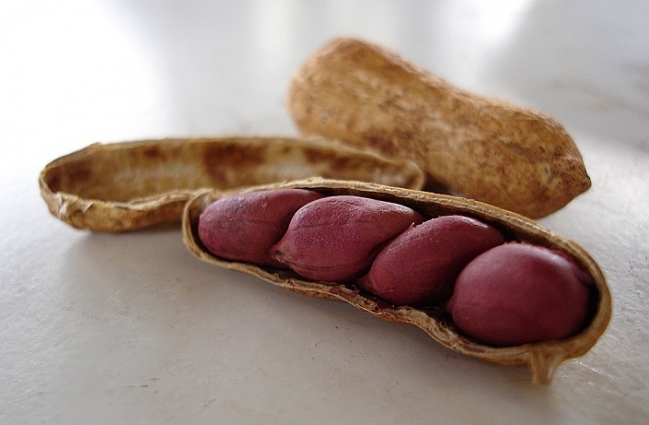
It stands to reason that there will be some aflatoxin in most peanut and peanut-based products, even if only trace amounts. It is important to stick to 100% Australian or USA sourced peanut products, due to the stringent guidelines, farming and processing methods.
If you are concerned about your aflatoxin intake, a study has shown that chlorophyll reduces the absorption of aflatoxins (4). So eating your powdered peanut butter, or any peanut products, with chlorophyll-rich foods will be helpful.
Some of the best food sources of chlorophyll are parsley, broccoli, green beans and peas, asparagus and green cabbage. To get the proper binding effect, the chlorophyll-rich food needs to be consumed during the same meal.
How to Use PB2 Powdered Peanut Butter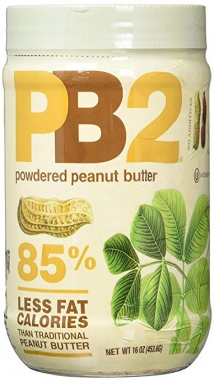
This is the fun part! You can read all the technical literature in the world about the pros and cons of peanuts. And then you come across one of those plastic containers filled with peanut butter made in-house. And all your planning goes out the window.
Peanuts just taste so darn good! If you’re struggling to keep full-fat peanut butter out of your life, you might like to mix up some PB2 and be on your way.
To make a low calorie peanut butter from PB2, simply mix 2 tbsp (12g) with 1 tbsp of water until nice and smooth. Now you’re ready to enjoy the nutty flavour without cranking up your cardio to compensate.
Once mixed, it’s best to use it immediately. However, it can be stored in the fridge for up to 48 hours.
Peanut Butter Powder Banana Bread Recipe (Gluten Free)
If you like chocolate, peanuts, bananas and bread, then this recipe is worth looking at.

Ingredients
5 Tbsp defatted Powdered Peanut Butter (like PB2)
6 Tbsp unsalted butter
Olive Oil Spray
1 ¾ cups gluten-free flour
¾ teaspoon baking powder
¼ teaspoon baking soda
½ teaspoon salt (optional)
¾ cup sugar
1 large egg
1 tsp vanilla extract
1/4 cup peanut butter
1/3 cup low-fat vanilla Greek yogurt
½ cup chocolate chips
2 medium ripe bananas
Method
- Preheat oven to 175°C.
- In a small mixing bowl, add the PB2, gluten-free flour, baking powder, baking soda and salt and mix well.
- In a large bowl, add the peanut butter, vanilla, 6 Tbsp melted butter, sugar, egg and yoghurt. Mix until smooth in consistency.
- Add half of the dry ingredients to the large bowl and mix well.
- Mix ½ of the chocolate chips into the dry mix and set aside.
- Mash the bananas and add to the wet mix in the large bowl.
- Add the remaining dry ingredients to the wet mix and stir until well combined into a thick batter.
- Line a 9x5 inch loaf pan with baking paper. Spray with a thin coat of olive oil.
- Add the batter to the loaf pan, tapping the bottom of the pan to remove air bubbles.
- Sprinkle the remaining chocolate chips onto the batter.
- Bake for 45 minutes or until done. Test with metal skewer to ensure centre is cooked through.
- Remove from oven and allow to rest for 10 minutes before removing from the pan.
- Slice and Serve!
Adapted from PB2 Foods Recipes
For a vegan version of this recipe, simply substitute the butter for a quality trans-fat free nut butter and switch the Greek yoghurt for coconut yoghurt. To bind, remove the egg and instead use soaked whole linseed (flaxseed) or even a few teaspoons of melted lecithin granules.
Conclusion
Peanut Butter Powders like PB2 are a convenient way to enjoy the nutty flavour with less than 1/3 of the calories. These products can be mixed with water to make a peanut butter-like mixture or added to recipes.
It’s feasible that powdered peanut butter made in Australia from Australian grown peanuts will contain trace amounts of some aflatoxins. This goes for American products as well.
However, these low levels have been deemed safe by FSANZ and the FDA government organizations. If you are still concerned about aflatoxins, eating your peanuts with a source of chlorophyll, like broccoli or green beans, will help to reduce their absorption into your system.
Green Bean Satay anyone?
References
Header image background Designed by Denamorado, Courtesy of FreePik.



